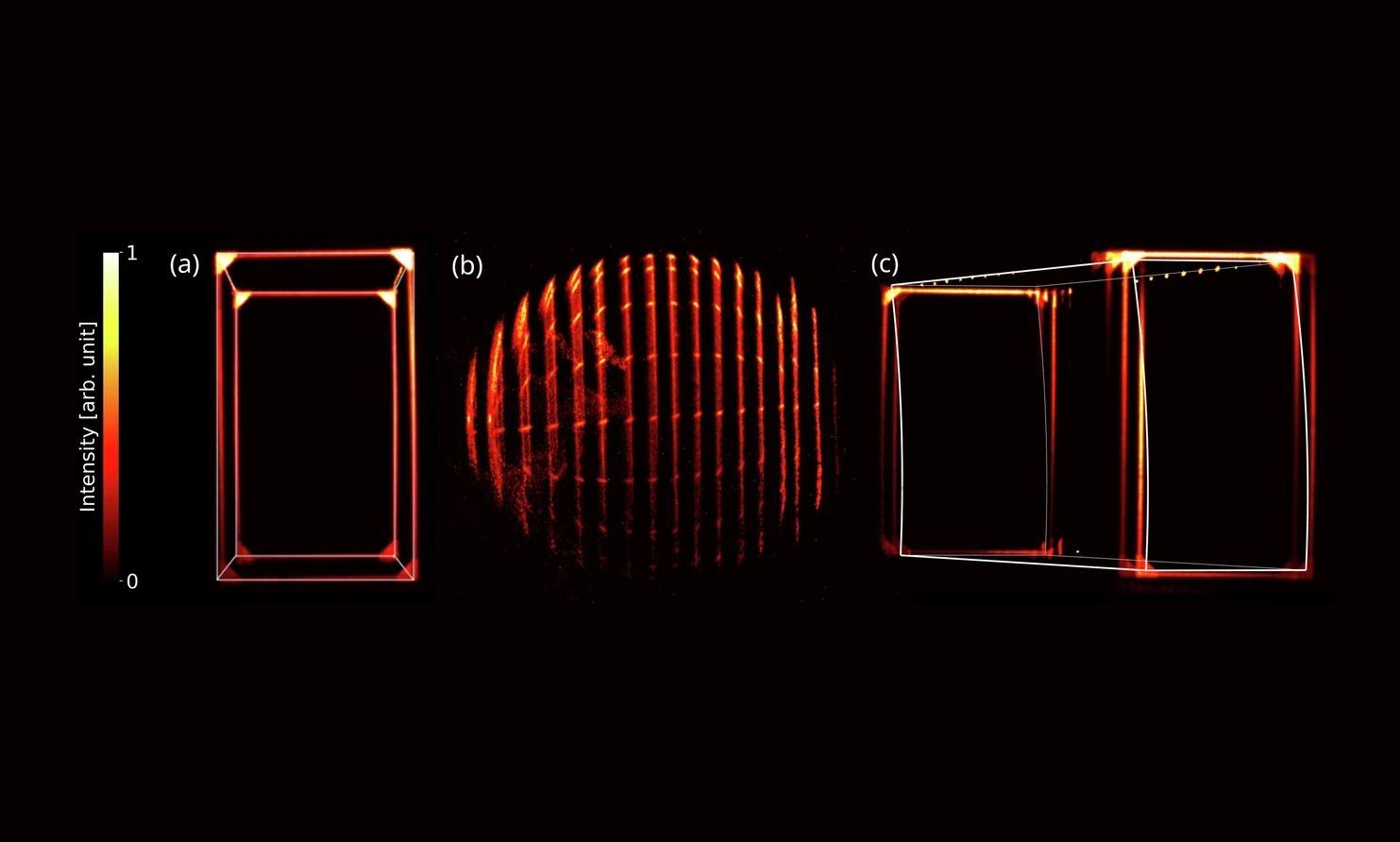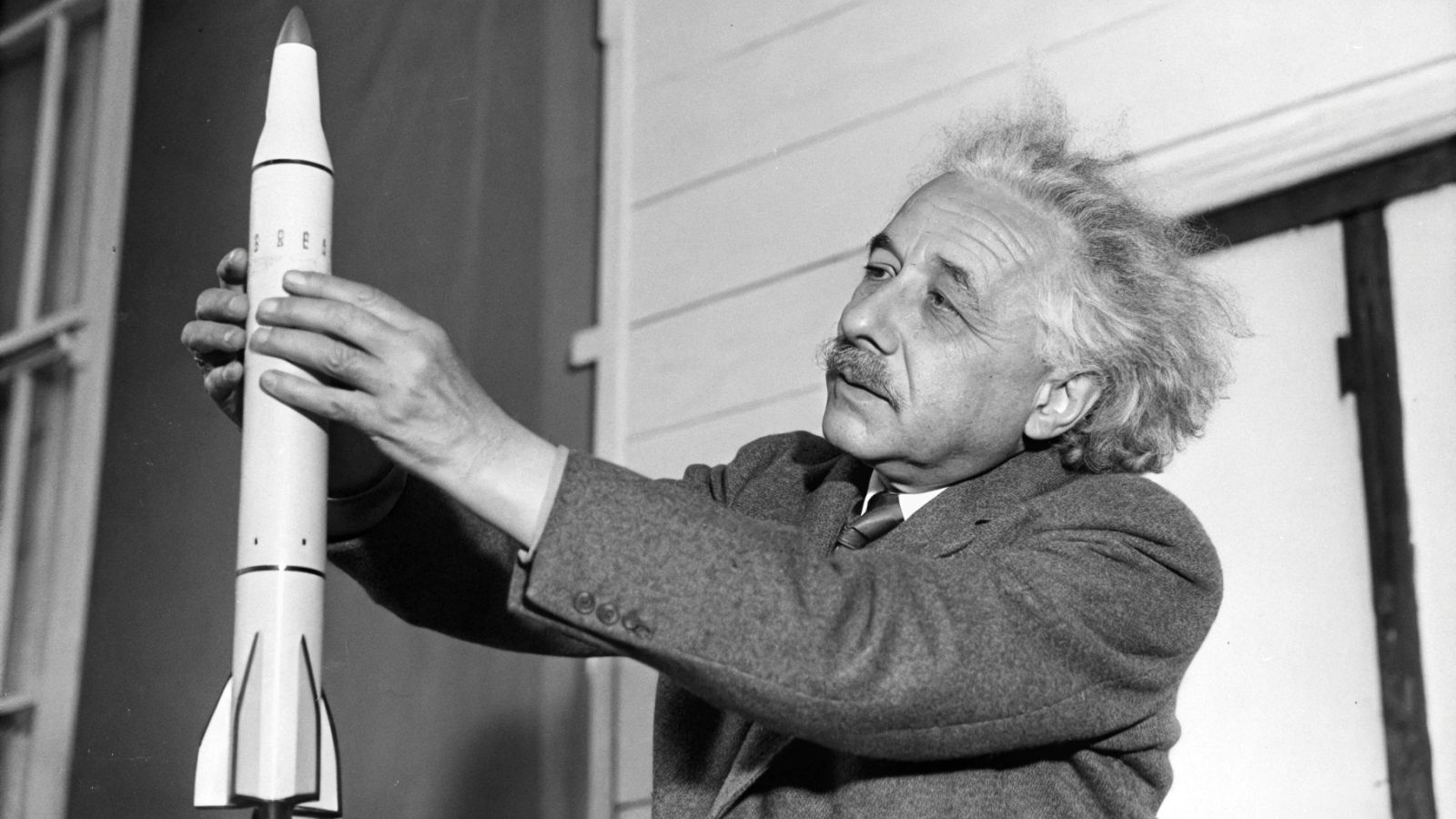This illusion of Einstein's special relativity visualized in the lab 🚀
Follow us on Google News (click on ☆)

a) Calibration image of the cuboid at rest, with a perspective simulation superimposed from the camera's position (white lines).
b) Terrell rotation of a Lorentz-contracted sphere moving at 0.999 c.
c) Terrell rotation of a cube, with simulation (white outlines) superimposed on experimental results to guide observation and validate the theory.
The experiment was conducted by adjusting the timing of laser flashes to simulate a reduced speed of light at 2 meters per second (6.6 feet per second). This trick allowed visualization of the effect without requiring actual relativistic speeds. The obtained images clearly show an apparent rotation of the objects, thus confirming the theoretical predictions.
Peter Schattschneider and his team combined images taken at different moments to create videos showing the effect. A cube indeed appears twisted, while a sphere retains its shape but with an apparent displacement of its north pole. These results open new perspectives for studying relativistic phenomena.
This research is the result of a unique collaboration between art and science. Artist Enar de Dios Rodriguez played a key role by initiating a project exploring ultra-fast photography. This interdisciplinary approach made visible an effect that was previously purely theoretical.
The implications of this discovery go beyond simply confirming a prediction. It offers a new way to visualize and understand the counterintuitive effects of relativity. This breakthrough could also inspire new methods for teaching relativistic physics.
The team now plans to explore other optical effects related to relativity. This work could eventually lead to new applications in the field of ultra-fast imaging or the simulation of cosmic phenomena.
What is length contraction in relativity?
Length contraction is a phenomenon predicted by Einstein's theory of special relativity. It states that the length of a moving object decreases in the direction of its motion from the perspective of a stationary observer.
This effect becomes significant only at speeds close to that of light. For example, a spacecraft traveling at 90% the speed of light would appear about 2.3 times shorter to an external observer.
Length contraction is not an optical illusion but a real consequence of the structure of spacetime. It is linked to time dilation, another key effect of special relativity.
Although counterintuitive, this prediction has been confirmed by numerous experiments, particularly with subatomic particles accelerated to relativistic speeds.

How does ultra-fast imaging work?
Ultra-fast imaging captures events occurring in nanoseconds or less. It relies on cameras capable of taking millions of images per second and ultra-short light sources such as femtosecond lasers.
In this experiment, researchers used extremely short laser pulses to 'freeze' the motion of objects. By precisely synchronizing these flashes with an ultra-fast camera, they were able to reconstruct the Terrell-Penrose effect.
This technique is similar to stroboscopic photography, where a moving scene is illuminated by very brief flashes. The difference lies in the temporal precision, which must be on the order of nanoseconds for these experiments.
Applications of ultra-fast imaging range from fundamental research to industry and medicine. It allows the study of phenomena too fast for the human eye, such as shock waves or chemical reactions.